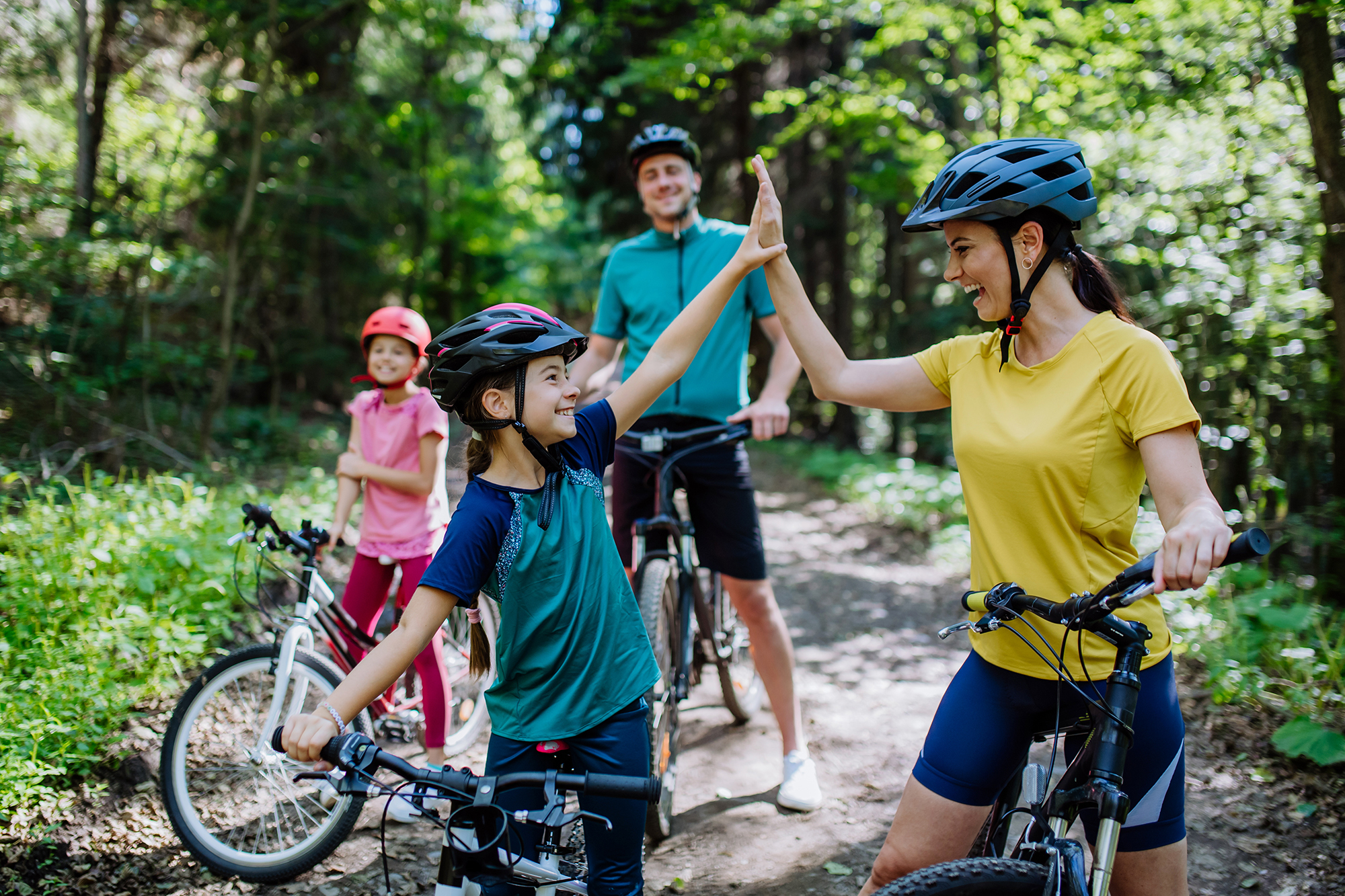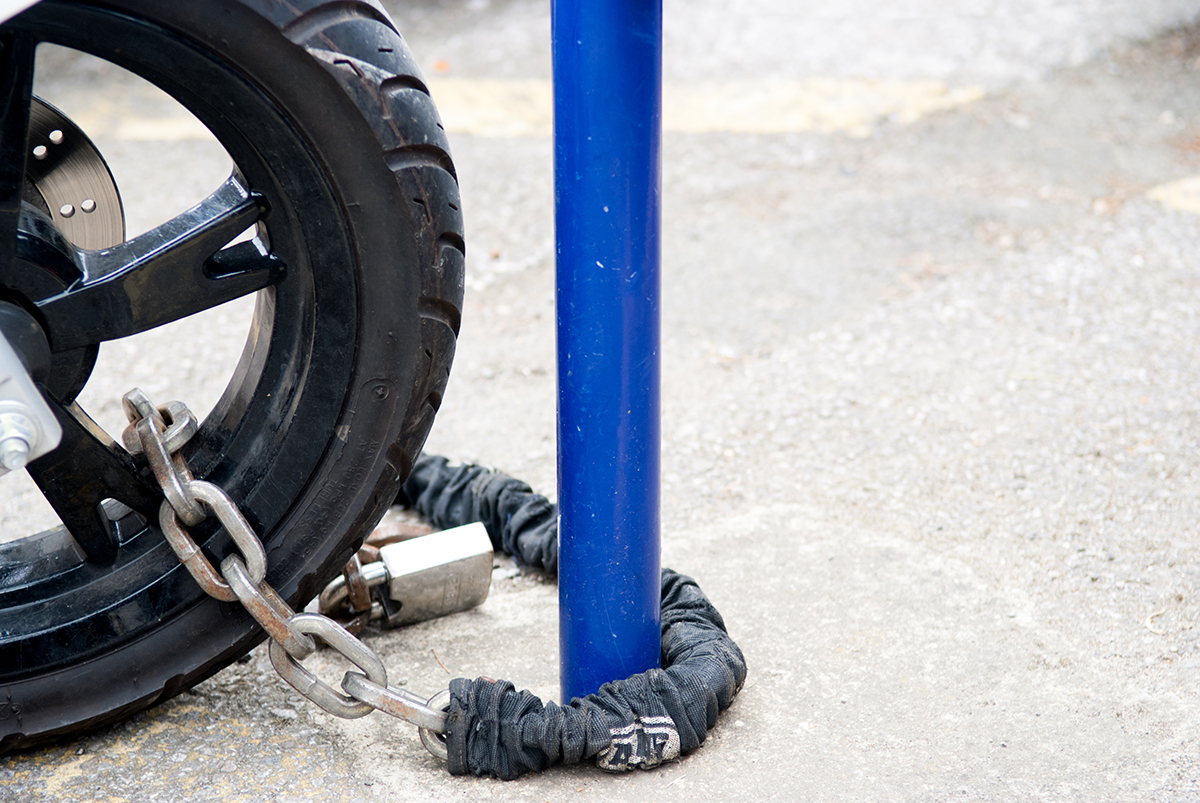Reduce your risk of injury, boost your awareness, & enjoy the ride with these cycling safety tips
Summer is the perfect time to take the bike out for a ride and catch some sun.
But just as important as full tires and a helmet are the cycling safety tips we’re about to cover in today’s article.
Whether you’re sharing the road with motorists, shredding a trail in the mountains, or going on a family bike ride in the neighborhood, these simple tools and strategies will help keep you and your fellow riders safe this season.
Make Sure Your Bike is Ready to Hit the Road
A poorly adjusted seat can lead to an uncomfortable ride, and a flat tire can cut your ride short, leaving you to travel on foot. That’s why our first cycling safety tip is to do a quick pre-ride check.
Test the tire pressure in both tires and refill them if needed. Make sure the seat is tightened at a comfortable height, and realign the handlebars if necessary.
If you’re going for a night ride, check that your headlight and taillight are securely attached and working properly. If you don’t have either of these installed, avoid riding at night as much as possible until you do.
This brief checkup will only take a minute or two, and it can save you a lot of trouble down the road.
Wear Safety Gear (Every Time)
Now for the cycling safety tip everybody knows but no one likes to follow: Wearing a helmet.
As annoying and cumbersome as they can be, helmets can, in no uncertain terms, mean the difference between life and death in a bicycle crash.
So, no matter how short your ride may be, don’t forget to wear one. It only takes a few seconds to put on and securely fasten, and your life is more than worth it.
If you’re a parent and you’re suiting up for a family ride, this is the perfect opportunity to set an example for your little ones and show them how to prioritize safety. For extra protection, you and your kids can also put on elbow and knee pads to avoid road rash from falls.
Additionally, as a general rule, wear bright colors whenever you go cycling. Making yourself as visible as possible—for motorists and pedestrians—is the best way to avoid crashes.
As mentioned above, you’ll need a bright, flashing headlight and taillight for night rides. But you’ll also want to wear neon or fluorescent clothing. Reflective safety vests and tape are a great way to boost your visibility to others.
Wear Sun Protection
This time of year, high UV index readings mean it’s all too easy to catch a sunburn.
Before you start pedaling, generously apply sunscreen on any exposed skin, and wear a pair of UV-blocking sunglasses to protect your eyes.
Also, stick to riding during the morning and late afternoon whenever possible, as UV radiation hits its peak around midday.
Prepare to Stay Hydrated
Dehydration is an even bigger risk in the summer, so don’t skimp on the water. Bring more than enough to last you the ride, and if you’re cycling with the family, make sure there’s plenty to go around.
Many bikes come equipped with secure cages for conveniently storing your water bottle. If yours doesn’t, you can always throw on a light backpack or Camelbak for easy access.
Tell Someone Your Plans
If you’re riding solo, don’t keep your plans a secret. Make sure at least one person knows where you’re going and how long you’ll be gone.
You can also have them check in on you periodically to make sure you’re safe. A quick text or call back will let them know you’re okay, and if they don’t get a response, they’ll know where to start looking for you and can call for help if needed.
For extra peace of mind, you can even share your location with a trusted friend or loved one while you’re out for a ride. That way, they’ll know exactly where you are, even if they don’t hear from you.
Going Off-road? Study the Trail First
Planning on hitting a mountain trail? Make sure you know the details before you set off.
When you know the length of the trail and the conditions to expect, you can properly assess whether you’re ready to handle it and plan accordingly, bringing the right amount of water and snacks to fuel the ride.
And as always, don’t go off-path. A brisk ride through a winding wooded trail is a thrilling experience, but bumping into a bear might make things a little too exciting.
Share the Road Safely
Aside from wearing gear, this cycling safety tip is the most important item on our list because the road is the most dangerous place for cyclists.
According to the National Highway Traffic Safety Administration:
- Cyclist deaths are highest in the summer, with almost three-quarters of them occurring in urban areas
- The biggest factor in fatal crashes is cyclists failing to yield the right of way. The second is not being visible
That’s why, if you’ll be riding in or near traffic, it’s absolutely critical to learn and obey the rules of the road and follow the strategies laid out below:
- Follow the rules of the road – The rules don’t change just because you’re on a bike. Obey traffic lights, signage, road markings, and right-of-way laws the same as you would if you were behind the wheel.
- Ride safely & predictably – Do your best to be where you’re expected to be and ride in a way nearby drivers can easily predict. That means avoiding quick, erratic movements and using proper hand signals when changing lanes and turning. Also, whether you’re in the bike lane or on the sidewalk, don’t go against the flow of traffic. That way, if your path ends, you’ll already be going in the same direction as any nearby motorists.
- Practice defensive cycling – No matter the situation, always behave as if pedestrians, fellow cyclists, and motorists can’t see you. Even if there’s no one nearby, use your hand signals when changing lanes and turning, if only to reinforce it as second nature. And at every crossing, slow down or come to a stop, obey the street signals, if any, and look left, right, back to the left again, and behind you before going.
- Watch for pedestrians – If you’re riding on the sidewalk, share it respectfully with pedestrians. When approaching someone from behind, use a bell to let them know you’re there (if you have one) and call out with an “on your left/right” so they know what to expect when you pass by.
Set Yourself Up With the Fastest Way to Get Help in an Emergency
Cycling accidents can be serious, and you need a lifeline you can count on in an emergency. Although 911 is the standard crisis response system, most people don’t know how unreliable it can be.
Between staffing shortages, frequent network outages, non-emergency calls, and the delays that result from these issues, your call could easily be put on hold or even go unanswered. That means if you or a loved one has had a bad injury, the condition could worsen or become irreparable by the time help finally arrives.
It’s unfortunate, but calling 911 always comes with the risk of dangerous delays.
With the Rescu app, that risk falls to zero.
Rescu allows you to dispatch emergency responders to your current location anywhere in the US with just two taps on your smartphone or Apple Watch. No phone call, no twenty questions from an operator. Just the help you need, on its way in seconds.
All you have to do is choose the emergency service you need (fire, police, or ambulance) and then tap “Send Alert.” In just a few moments, the app sends your alert, GPS coordinates, and pre-registered medical and personal information to Rescu HQ. There, your operator will notify and dispatch the nearest response team directly to you.
On the next screen after sending an alert, you’ll have the option to text or call your dispatcher to provide more information. But this is totally optional. If you’re too stressed or unable to talk, you can put your phone away and rest assured that responders are en route.
Rescu’s 24/7 monitoring center is UL-certified, 5-diamond rated by The Monitoring Association, and dedicated solely to subscribers. This means it’s always fully staffed and virtually immune to outages, non-emergency calls, and prank calls, so you’ll be priority one every time.
Cycling often takes us to new and unfamiliar places. That’s half the fun of it! But when you need help, you shouldn’t have to worry about delays or having to explain your location over the phone.
You have enough on your plate during an emergency. Let Rescu do all the heavy lifting for you, and enjoy the peace of mind that comes with having the fastest way to get help at your fingertips.
Find out more about Rescu on our website, and click or tap below to download today.





